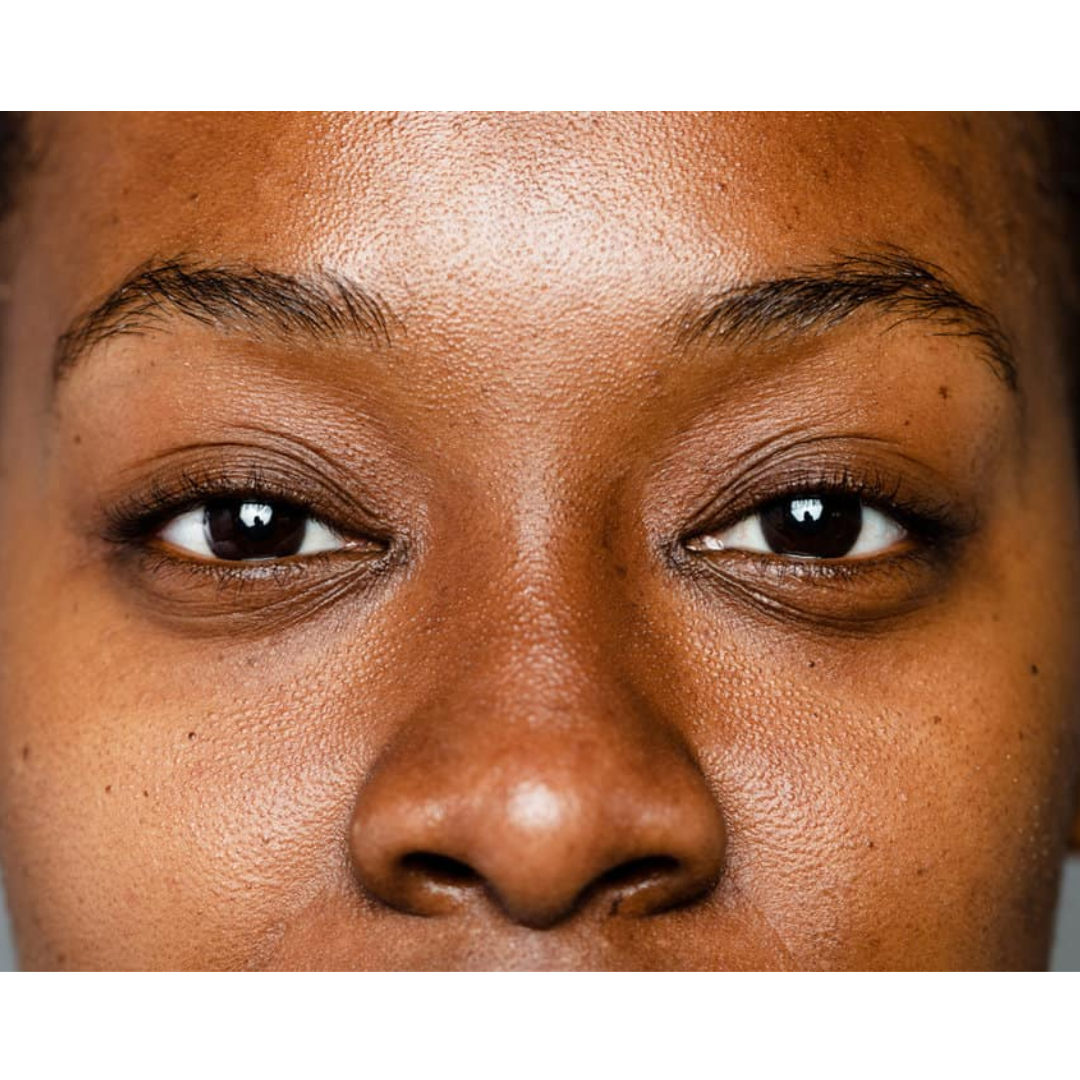
What causes hyperpigmentation?
Share
Hyperpigmentation is a common skin condition manifested by the appearance of brown or dark patches on the skin. This phenomenon is mainly due to excessive production of melanin, the pigment responsible for skin color. Although often benign, this condition can be a source of aesthetic concern, especially when pigment spots are localized on the face, hands or décolleté. Understanding the causes ofhyperpigmentation and how to prevent or treat it is essential to maintaining an even complexion and healthy skin.

The main causes of hyperpigmentation
1. Sun exposure and UV rays
Sun exposure is the most common cause ofhyperpigmentation. UV rays stimulate melanocytes, the cells responsible for melanin production. Prolonged exposure to the sun without adequate sun protection leads to the formation of pigmentation spots, also known as sun spots or lentigos. Sun creams with a high protection factor(SPF 30 or more) are essential to protect the skin from the harmful effects of ultraviolet rays and prevent the appearance of new spots.
2. Skin aging
Withage, the skin undergoes natural changes, including an accumulation of melanin in certain areas. Age spots, also known as senile lentigos, appear mainly on sun-exposed areas of the body, such as the hands and face. Skin aging also promotes the breakdown of collagen and the appearance of wrinkles, accentuating pigmentary imperfections.
3. Hormonal changes
Hormonal fluctuations, particularly during pregnancy or when taking contraceptives, can cause a particular type ofhyperpigmentation known as melasma, or pregnancy mask. These brown spots generally appear on the forehead, cheeks and upper lip. Hormones stimulate melanin production, which is exacerbated bysun exposure.
4. Inflammation and scarring
Post-inflammatory hyperpigmentation occurs after an injury to the skin, such as a cut, burn oracne outbreak. During the healing process, melanin overproduction can occur, leaving dark, sometimes unsightly spots that can persist for several months. Regular exfoliation with gentle products such as fruit acids(AHAs) can help reduce these marks.
5. Genetic factors and phototype
People with black or dark skin (phototypes IV to VI) are more prone tohyperpigmentation due to the high concentration of melanin. Similarly, freckles, due to an uneven distribution of melanin, are common in fair skins. Genetic inheritance also plays a role in the distribution of skin pigments.

The most common types of hyperpigmentation
1. Solar lentigos
These small brown spots appear after prolonged exposure to the sun. They are particularly visible on sun-exposed areas such as the back of the hands and the face.
2. Melasma
It takes the form of large, symmetrical brown spots, often due to hormonal changes. The use of a broad-spectrum sunscreen is essential to limit aggravation.
3. Post-inflammatory hyperpigmentation
Caused by skin lesions, it is common afteracne or superficial burns. Black or mixed-race skin is particularly sensitive.
Preventing and treating hyperpigmentation
1. Sun protection
Daily use of a sunscreen with a suitable SPF is the most effective way to prevent the appearance of pigmentation spots. Suncare products should be applied morning and night, even in winter, to protect the skin from UVA and UVB rays.
2. Dermatological care
Consulting a dermatologist can help determine the nature of the spots and suggest a suitable treatment. Treatment options include:
- Laser and Intense Pulsed Light: these techniques target pigments and fade brown spots.
- Chemical peel: exfoliates theepidermis to promote cell renewal.
- Cryotherapy: the application ofliquid nitrogen destroys pigmented cells, effective for lentigos.
3. Anti-stain cosmetics
Lightening serums with vitamin Ckojic acid orhydroquinone are particularly effective. These ingredients reduce melanin production and lighten existing spots. Anti-aging creams enriched with antioxidants and retinoids also promote cell regeneration. Salicylic acid-based cleansers are also recommended for this type of symptom!
4. Natural remedies
Certain essential oils, such as chaulmoogra, are renowned for their depigmenting properties. Lemon juice, rich in vitamin C, is a traditional remedy for lightening spots, but should be used with caution due to its photosensitizing effect.
Conclusion
Hyperpigmentation is a complex phenomenon influenced by many factors, includingsun exposure, aging and hormonal imbalances. Although pigmentation spots can be unsightly, they are generally not dangerous. Adopting an appropriate skincare routine, including rigorous sun protection and specific treatments, can help prevent andreduce their appearance. In the event of persistent pigmentation spots, consulting a dermatologist is essential to ensure appropriate treatment and the restoration of an even, radiant complexion.

